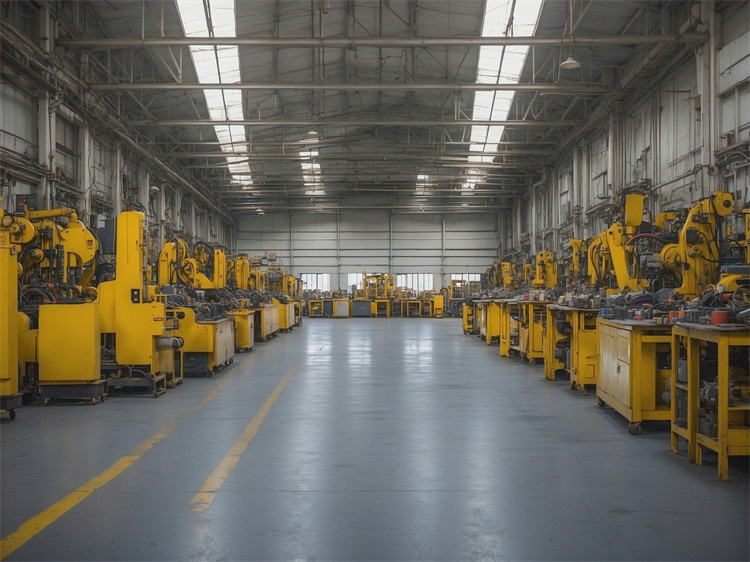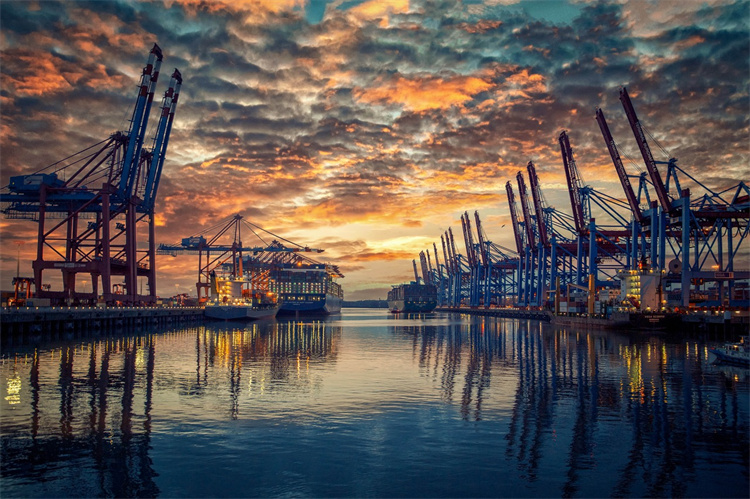The Next Big Trends in Global Manufacturing Supply Chains

Staying ahead in global supply chains holds immense importance for businesses. The supply chain management of global manufacturing faces constant changes due to evolving market demands and technological advancements. Companies must adapt swiftly to maintain competitiveness. Geopolitical instability impacts over 60% of global organizations, highlighting the need for resilience. The Global Logistics Automation Market shows a predicted growth rate of 12.4%, emphasizing the shift towards automation. Embracing these trends ensures robust and efficient supply chains.
Technological Advancements in the Supply Chain Management of Global Manufacturing

Artificial Intelligence and Machine Learning in the Supply Chain Management of Global Manufacturing
Predictive Analytics
Artificial Intelligence (AI) and Machine Learning (ML) transform predictive analytics in supply chain management. Companies like Tesla and Walmart leverage AI to forecast demand accurately. AI analyzes historical data to predict future trends. This helps businesses optimize inventory levels. Predictive analytics reduce waste and improve customer satisfaction. AI-driven insights enable proactive decision-making. This leads to a more efficient supply chain.
Automation in Warehousing
Automation in warehousing enhances operational efficiency. Robots and automated guided vehicles (AGVs) streamline warehouse operations. Automation reduces human error and increases productivity. Companies like Amazon use automation to handle large volumes of goods. Automated systems manage inventory, picking, and packing processes. This results in faster order fulfillment. Automation in warehousing ensures a smooth supply chain flow.
Blockchain Technology
Transparency and Traceability
Blockchain technology improves transparency and traceability in supply chains. Blockchain creates an immutable record of transactions. This ensures data integrity and trust among stakeholders. Companies like Maersk use blockchain to track shipments. Blockchain provides real-time visibility into the movement of goods. This enhances accountability and reduces fraud. Transparent supply chains build consumer confidence.
Smart Contracts
Smart contracts automate and secure transactions in supply chains. These self-executing contracts run on blockchain technology. Smart contracts eliminate the need for intermediaries. This reduces transaction costs and speeds up processes. Businesses use smart contracts to enforce agreements automatically. This ensures compliance and reduces disputes. Smart contracts enhance efficiency and reliability in supply chains.
Internet of Things (IoT)
Real-time Monitoring
The Internet of Things (IoT) enables real-time monitoring in supply chains. IoT devices collect and transmit data from various points in the supply chain. This provides real-time insights into the status of goods. Companies use IoT to monitor temperature, humidity, and location. Real-time monitoring helps prevent spoilage and delays. IoT enhances visibility and control over the supply chain.
Enhanced Inventory Management
IoT improves inventory management by providing accurate data. Sensors track inventory levels in real time. This helps businesses maintain optimal stock levels. IoT reduces the risk of stockouts and overstocking. Companies use IoT to automate reordering processes. This ensures a continuous supply of goods. Enhanced inventory management leads to cost savings and improved customer service.
Sustainability and Green Logistics

Eco-friendly Packaging
Biodegradable Materials
Biodegradable materials play a crucial role in reducing environmental impact. Companies like Unilever and Nestlé have adopted biodegradable packaging to minimize waste. These materials break down naturally, reducing landfill accumulation. Apple has transitioned to using more biodegradable materials in packaging. This shift supports a circular economy and promotes sustainability. Businesses that use biodegradable materials demonstrate a commitment to the environment.
Reusable Packaging Solutions
Reusable packaging solutions offer another sustainable option. Patagonia has implemented reusable packaging to reduce waste. These solutions include containers and wraps that can be used multiple times. Amazon's Frustration-Free Packaging initiative focuses on reducing waste through innovative designs. Reusable packaging helps decrease the need for single-use plastics. Companies that adopt reusable solutions contribute to long-term environmental benefits.
Carbon Footprint Reduction
Renewable Energy Sources
Renewable energy sources significantly reduce carbon footprints. Many companies now use solar, wind, and hydroelectric power. These sources provide clean energy and reduce reliance on fossil fuels. Canary Marketing offsets emissions by optimizing packaging sizes and choosing eco-friendly shipping methods. Businesses that invest in renewable energy demonstrate leadership in sustainability. This transition supports global efforts to combat climate change.
Efficient Transportation Methods
Efficient transportation methods also play a vital role in reducing carbon footprints. Companies optimize routes and use fuel-efficient vehicles. Electric and hybrid vehicles help lower emissions. Amazon uses efficient transportation methods to improve delivery processes. These practices reduce fuel consumption and greenhouse gas emissions. Businesses that prioritize efficient transportation contribute to a greener supply chain.
Resilience and Risk Management
Diversification of Suppliers
Reducing Dependency on Single Sources
Reducing dependency on single sources strengthens supply chain resilience. Companies face significant risks when relying on a single supplier. Supply disruptions in the early 20th century highlighted these vulnerabilities. Businesses must diversify their supplier base to mitigate these risks. This approach ensures a steady flow of materials and products. Diversification reduces the impact of labor costs, shortages, and logistical challenges. Companies that adopt this strategy improve their overall supply chain stability.
Regional Sourcing Strategies
Regional sourcing strategies enhance supply chain flexibility. Companies benefit from sourcing materials closer to production sites. This approach reduces transportation costs and lead times. Regional sourcing also minimizes exposure to geopolitical risks. Businesses can respond more quickly to market changes. The development of supply chain risk management emphasizes the importance of regional sourcing. Companies that implement regional strategies gain a competitive edge in the market.
Advanced Risk Assessment Tools
Scenario Planning
Scenario planning prepares businesses for potential disruptions. Companies use this tool to anticipate various risk scenarios. Scenario planning involves creating detailed plans for different situations. These plans help businesses respond effectively to unforeseen events. Companies can test their supply chain resilience through simulations. Scenario planning reduces the impact of supply and demand fluctuations. Businesses that engage in scenario planning enhance their ability to navigate uncertainties.
Real-time Risk Monitoring
Real-time risk monitoring provides immediate insights into supply chain vulnerabilities. Advanced technologies enable continuous tracking of supply chain activities. Companies can identify and address risks as they arise. Real-time monitoring helps prevent disruptions caused by inflation and logistical challenges. Businesses use data-driven insights to make informed decisions. Real-time risk monitoring supports proactive supply chain management. Companies that invest in this technology ensure a robust and efficient supply chain.
E-commerce and Omnichannel Strategies
Direct-to-Consumer Models
Benefits and Challenges
Direct-to-consumer (D2C) models revolutionize the supply chain management of global manufacturing. Manufacturers bypass distributors and retailers, reaching customers directly. This approach increases revenue by eliminating intermediaries. Companies like Nike and Warby Parker have successfully implemented D2C strategies. These companies build closer relationships with customers and enhance brand loyalty.
However, D2C models present challenges. Manufacturers must manage logistics and fulfill consumer demand. Handling returns and customer service becomes more complex. The responsibility of maintaining inventory levels falls on the manufacturer. Despite these challenges, the benefits often outweigh the drawbacks. Companies gain valuable insights into consumer behavior and preferences.
Case Studies
Several companies exemplify the success of D2C models. Dollar Shave Club disrupted the razor industry with a subscription-based D2C model. The company provided affordable razors directly to consumers. This strategy led to rapid growth and a loyal customer base. Another example is Glossier, a beauty brand that leverages social media for D2C sales. Glossier's direct engagement with customers fosters a strong community and brand loyalty.
Casper, a mattress company, also thrives with a D2C approach. The company offers high-quality mattresses delivered to customers' doors. Casper's innovative marketing and customer-centric approach drive its success. These case studies highlight the potential of D2C models in transforming the supply chain management of global manufacturing.
Integrated Supply Chain Solutions
Seamless Customer Experience
Integrated supply chain solutions create a seamless customer experience. Companies synchronize operations across multiple channels. Customers enjoy a consistent experience whether shopping online or in-store. Retailers like Target and Walmart excel in omnichannel strategies. These companies integrate their supply chains to provide real-time inventory information. Customers can check product availability and choose convenient delivery options.
Seamless customer experiences increase satisfaction and loyalty. Companies that invest in integrated supply chain solutions gain a competitive edge. The ability to meet customer expectations across channels drives business success. Retailers must focus on creating a unified shopping experience to thrive in the modern market.
Inventory Synchronization
Inventory synchronization plays a crucial role in integrated supply chain solutions. Accurate inventory data ensures products are available when and where customers need them. Companies use advanced technologies to track inventory levels in real time. This reduces the risk of stockouts and overstocking. Efficient inventory management leads to cost savings and improved customer service.
Retailers like Zara and H&M utilize inventory synchronization to optimize their supply chains. These companies respond quickly to changing fashion trends and customer demands. Real-time inventory data enables efficient restocking and distribution. Businesses that prioritize inventory synchronization enhance their operational efficiency.
The blog explored several emerging trends in global supply chains. These trends include technological advancements, sustainability, resilience, and e-commerce strategies. Adapting to these trends holds immense importance for businesses. Companies must embrace digitalization and collaboration to enhance supply chain efficiency. Investing in eco-friendly practices and advanced risk assessment tools ensures long-term sustainability. The future of global supply chains looks promising with the integration of AI, IoT, and blockchain technologies. Businesses that stay agile and innovative will thrive in this dynamic landscape.
See Also
5 Key Trends Shaping Future Supply Chain Efficiency
Addressing Globalized World Challenges in Supply Chain Expansion
Tomorrow's Logistics Revolution: AI in Supply Chain
Reshaping Industries with Cloud-Based Supply Chain Solutions
Exploring Global Consumer Demands: A Deep Dive into Jusda's Supply Chains
